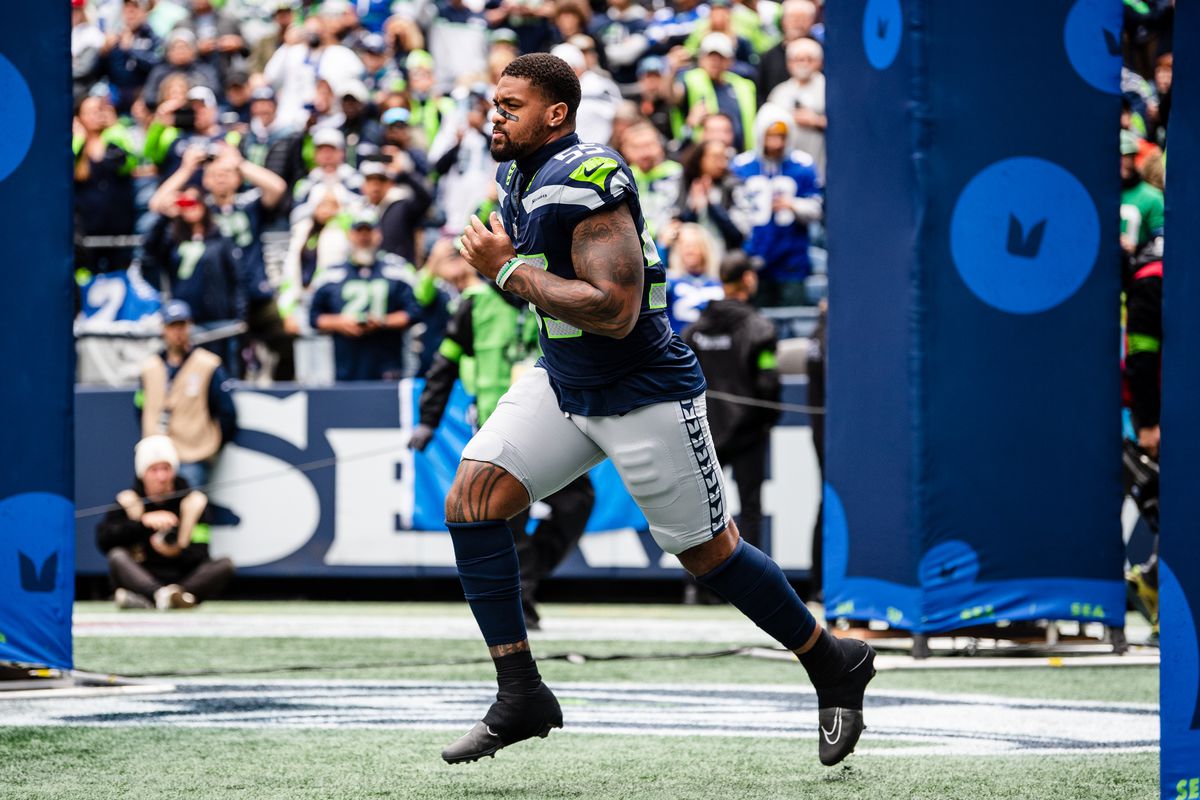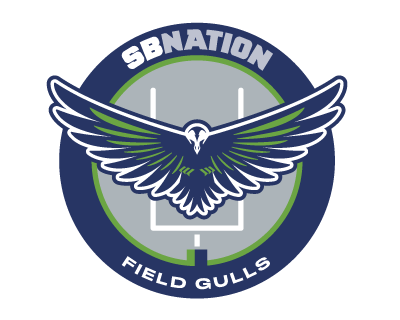
The Seattle Seahawks have some more salary cap space for the 2024 season.
OverTheCap.com reports that defensive lineman Dre’Mont Jones, who’s in the second of his three-year deal with the Seahawks, has had his contract restructured. His cap charge for the upcoming season has been lowered, the 2025 cap number has increased, and in a rarity for the Seahawks we’re also seeing some void years tacked on.
The Seahawks restructured the contract of defensive lineman Dre’Mont Jones converting $9.875 million of Jones’ 2024 salary into a signing bonus to create $7.4 million in cap room for the season, lowering his salary cap charge to $10.77 million. Jones’ 2025 salary cap number increased by $2.468 million to $25.645 million and two void years were added to the contract. The two void years currently hold $4.9 million in salary cap charges.
This should effectively end any speculation about the Seahawks releasing Jones this season. Cutting him would result in only $1.6 million in cap savings and just over $9 million in dead money incurred in a season in which they’ve already absorbed a lot of dead money through releasing Jamal Adams and Quandre Diggs. Trading him would result in the same previously mentioned figures, but I suppose the benefit would be getting appropriate compensation to offset the dead money. It’s certainly a more tradeable contract post-restructure.
What are void years, you ask? Great question, best answered by OTC’s Jason Fitzgerald.
For those unfamiliar with a void year in a contract, think of it as a way to finance a purchase that you probably can’t afford but you are doing whatever you can to stretch your money as much as possible. These are years in a contract that are essentially “dummy years” where you can dump salary cap charges in the future rather than taking the salary cap hit now for the player. For example let’s say a team only has $4 million in cap room but wants to sign a player to a one year $10 million contract. You can not afford the $10 million in 2023 so you pay the player an $8 million signing bonus and add four “void years” which allows you to buy the player this year for just $3.6 million on the cap and then defer the other $6.4 million to the future.
In other words, it’s effectively “buy now and pay later.”
The void years are something we typically haven’t seen much of under John Schneider outside of the 2021 season, which was directly impacted by the COVID-19 pandemic. Chris Carson, Ethan Pocic, Gerald Everett, Kerry Hyder Jr, Cedric Ogbuehi, Ahkello Witherspoon, Carlos Dunlap, and Benson Mayowa all had voidable years on their respective contracts, and none of them was retained past that season (although Carson was entirely because of injury). Under normal circumstances, void years have not been a common Seahawks tactic, although the team does have a new salary cap expert on staff.
With $7.4 million opened up this year, the Seahawks have over $8 million in available and effective cap space ahead of training camp. Does this mean the Seahawks are making a move for a free agent or looking to engineer a trade to acquire a player? Maybe, maybe not.
Keep in mind that during the offseason only the 51 biggest cap hits actually count against the salary cap. After cutdown day, everyone on the 53-man roster will hit the cap, as well as anyone on injured reserve, PUP, or the practice squad. For example, while every 2024 Seahawks draft pick is under contract, half of them have a cap hit outside in the top-51. That will no longer apply by the end of August, and assuming every draft pick makes the team, there will need to be about $3.5 million in cap room to get those players on the regular season roster.
The main story is still Jones getting his deal reworked in the first place. After a generally underwhelming first season with the Seahawks, Jones has been getting work as an edge rusher instead of an interior defensive lineman. The personal workouts have turned into actual drills at mandatory minicamp.

Loading comments...